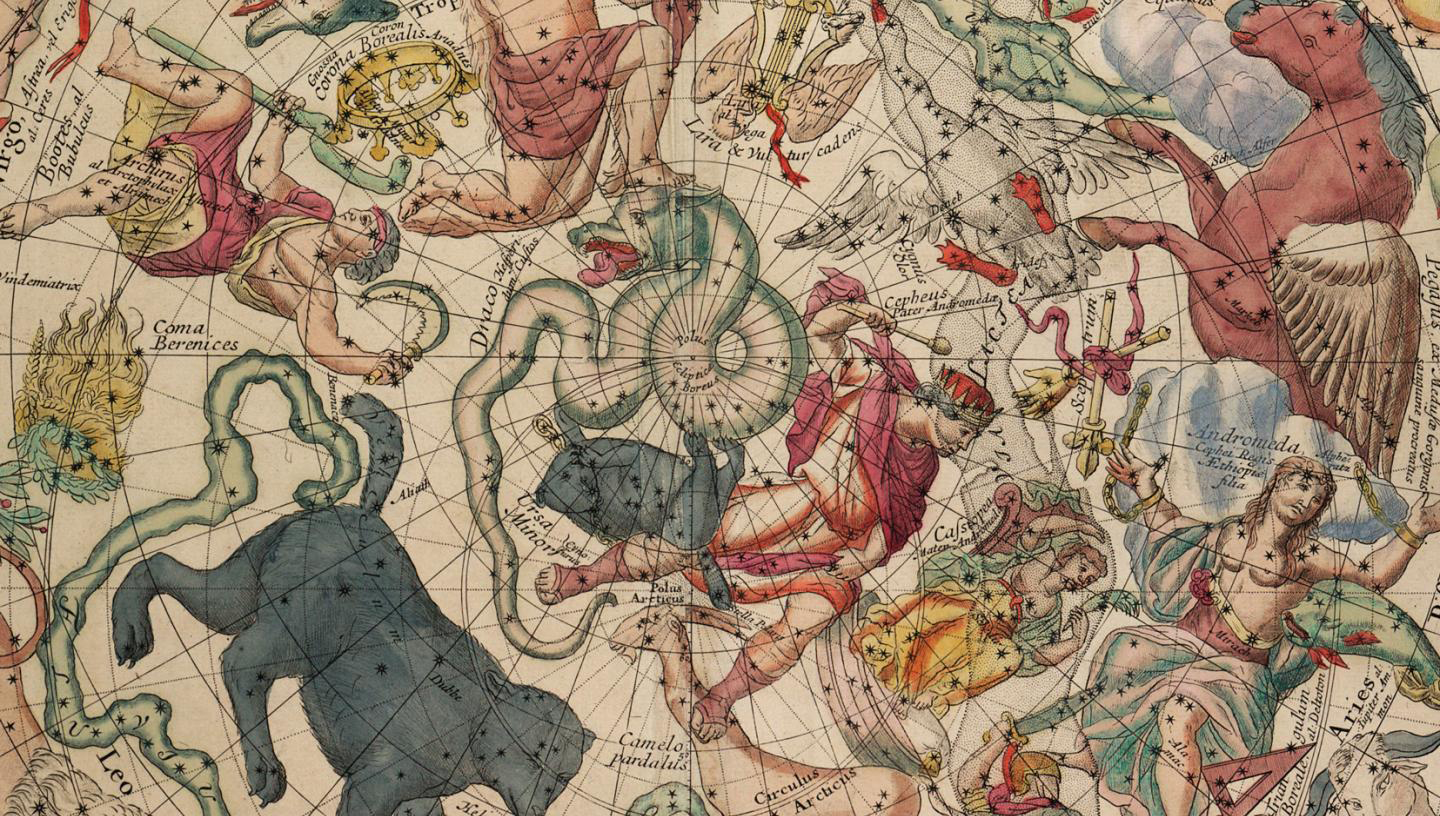The constellations are delimited regions in the sky, within each of which stands out a asterism The constellations are composed of some of its brightest stars (associated with a mythological figure as a result of "joining" such stars with imaginary lines); the constellations, meanwhile, allow us to demarcate the celestial vault, as if they were "countries" or pieces of a puzzle. Legend attributes their invention to Chiron, a wise Centaur, teacher of Greek heroes. Today their importance only has practical purposes, since the associated asterisms allow us to orient ourselves in the sky. The names of constellations refer to mythological beings, animals or objects.
Sky region vs constellation
As already said, in each constellation we can identify its stars that are brighter than the rest and assign them an asterism, as an imaginary figure that will help us orient ourselves.
In the following image you can compare the concepts of sky region (left) and a constellation, that is, a delimited region of sky (right) when using the slider.


Asterism and mythological figure
Now, the image on the left shows not only the delimited region of the sky (constellation), but its asterism main, that is, imaginary lines formed by the brightest stars within the constellation.
The image on the right shows the associated mythological figure to that asterism.


Currently, the International Astronomical Union (IAU) recognizes a sky divided into 88 constellations, which considers the 48 included by Ptolemy in his catalog of the year 150. These, from the northern hemisphere, were known since prehistoric times or came from the Greek, archaic, Sumerian and Egyptian cultures. The others, especially in the Southern Hemisphere, emerged during the last centuries. Due to the advance of the Earth in its annual solar orbit, the night shows us different sectors of the celestial sphere and the night sky changes with respect to the previous day. Thus, the constellations visible in winter are different from those in summer.
Learn more information about the constellations and their most interesting objects to observe in the subsections presented.


